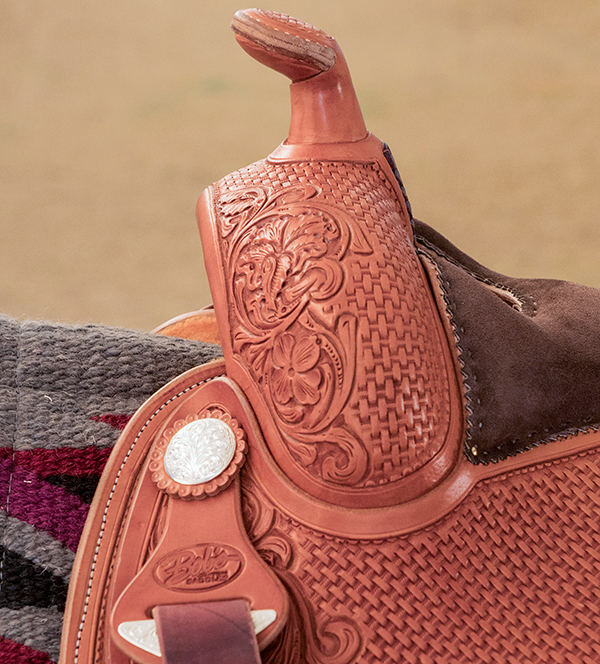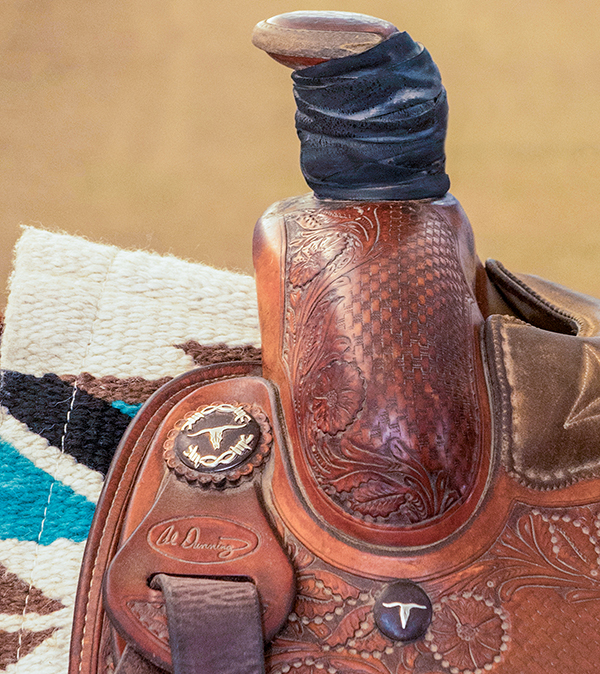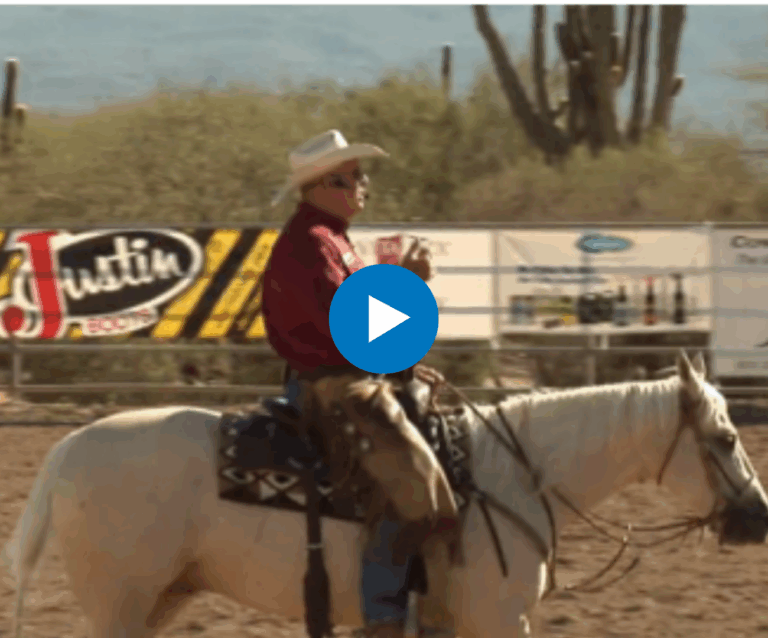Saddle horns have evolved over the many years I’ve been riding, training, and showing horses. Once thought of as fairly generic, they’ve developed to be functional for different disciplines. This means they play a role in your saddle selection, according to how you plan to use it. There is some crossover—you might see any of these saddle horns in a ranch riding class, for example. But they’re largely discipline-specific.
Here I’ll cover the three most common styles of saddle horns. Use this information to select your next saddle and to evaluate how you’re using your current saddle. Remember that every part of the saddle—fork, gullet, seat, cantle, fenders—has likely been tweaked for a specific purpose. Choosing the right saddle for your event will keep you and your horse comfortable and make you more successful and correct in your horsemanship.
One | Horn type: No. 1.
Details: The low profile of this horn means it doesn’t interfere with your rein hand. It’s there to assist you when you need it, but it mostly just stays out of your way. The fork tilts slightly forward, which also keeps the horn from being a hindrance. If you need to grab the horn with your free hand for safety when your horse spooks, for example, your hand sits on the side of the horn, with the edge in your palm. It’s less secure than the cutting horn, discussed on the next page, but it fits the bill for less-intense riding.

Fun fact: This is aptly named the No. 1 horn, because it’s the most popular horn type you’ll see. It’s used by everyone from reiners to rail riders.
Two | Horn type: Dally or post.
Details: This horn, made for a roping saddle, sits a little higher, has a larger cap, and situates itself more straight up and down than the No. 1. The gullet on a roping saddle is wider and sits closer to the horse’s withers so when you dally your rope around the horn, the horn doesn’t get jerked left or right. The horn is wrapped with rubber to keep your rope from slipping around the horn; instead it can hold tight until you undo your dally. If you hold the horn before you leave the roping box, it’s most likely that you’ll hold the front portion of the horn to steady yourself when your horse bursts out of the box.

Fun fact: Most dally horns are thicker and sturdier than a normal riding horn to handle the pull of a steer or calf when roping or doctoring cattle.
Three | Horn type: Cutting or cow horse.
Details: This is a horn you can hold onto for safety in highly athletic events, like cutting and working cow horse. The taller horn sits on swells that are between the forward-positioned No. 1 and the upright dally horn. This optimal tilt keeps your elbow in front of your hip when you hold the horn. In most cases, you’ll hold the horn with three fingers below the cap of the horn, your index finger in front of the cap, and your thumb around the horn. This allows you to push the heel of your hand against the horn so you can keep your balance as your horse moves quickly to cut a cow or turn on the fence.

Fun fact: The smaller diameter of this horn makes it easier for any-size hand to securely grip.






